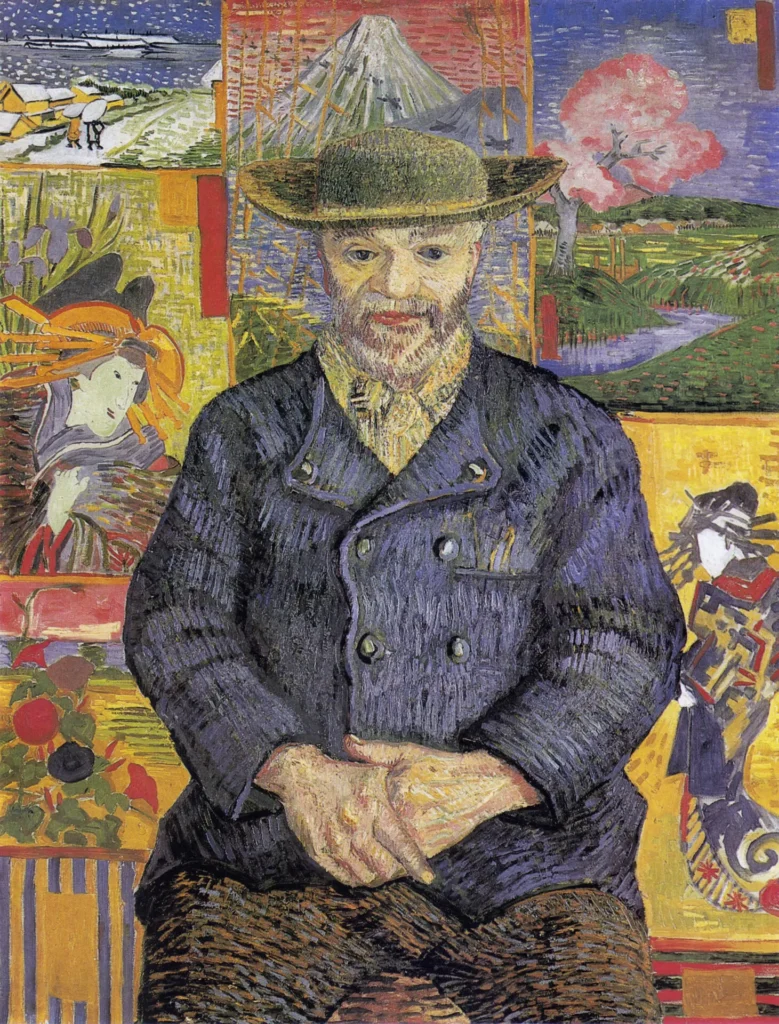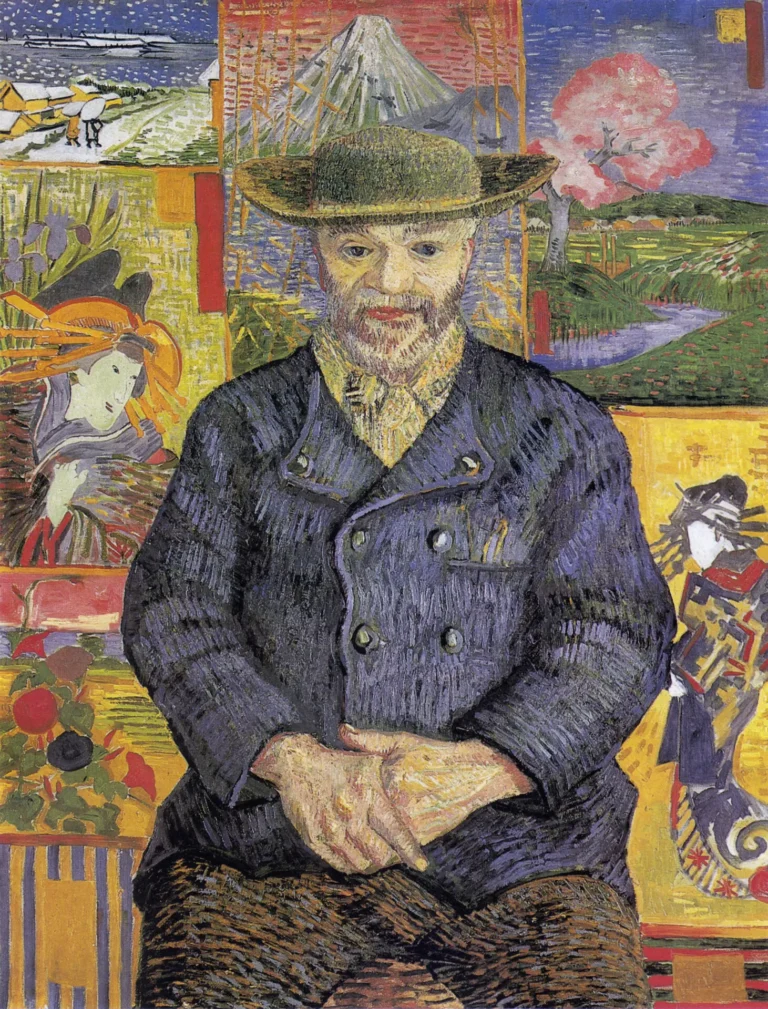Portrait of Père Tanguy
Portrait of Père Tanguy, painted in 1887, is a captivating portrayal of the art dealer Julien Tanguy, who played a significant role in supporting Van Gogh's artistic endeavors. The painting features Tanguy sitting in his shop surrounded by vibrant colors and art materials, which reflect the lively atmosphere of his store. Van Gogh’s use of bold brushstrokes and a rich palette showcases his unique style, creating a warm and inviting representation of Tanguy that captures both his character and the spirit of the artistic community in Paris.
1887
About the Artwork
Van Gogh met Père Tanguy during his time in Paris, where Tanguy ran a small art supplies shop frequented by many artists. This portrait was painted as a tribute to Tanguy's support and encouragement during a challenging time in Van Gogh's career. The choice to depict Tanguy in his shop, surrounded by the very tools of art, signifies the importance of patrons in the artistic process. It was a time when Van Gogh was experimenting with color and technique, and Tanguy's belief in his work provided much-needed motivation.
In Portrait of Père Tanguy, Van Gogh employs a vibrant color scheme and expressive brushwork to create a sense of intimacy and warmth. The background filled with paints and canvases adds context to Tanguy's role in the art community. This painting not only captures the likeness of Tanguy but also serves as a reflection of Van Gogh's gratitude towards those who supported him. The bond between the artist and the patron is palpable, making this portrait a significant moment in Van Gogh's artistic journey. Tanguy’s gentle expression and the surrounding colors embody the camaraderie and shared passion that characterized the vibrant Parisian art scene of the time.










